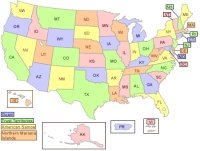Cleanups in Louisiana
Brownfields
Brownfields are real property, the expansion, redevelopment, or reuse of which may be complicated by the presence or potential presence of a hazardous substance, pollutant, or contaminant. Cleaning up and reinvesting in these properties protects the environment, reduces blight, and takes development pressures off greenspaces and working lands.
Brownfields Success Stories highlight the accomplishments of EPA brownfields grantees.
Grantee accomplishments across Louisiana
- Charpentier Historic District, Lake Charles
- Former Malter Property, Gretna
- Main Street USA , Baton Rouge
- Petroleum Tower, Shreveport
- St. Matthew School, Melrose
- Shreveport Convention Center, Shreveport
- Southern University at Shreveport Job Training Program, Shreveport
A Target Brownfields Assessment (TBA) is a free service the EPA Region 6 Brownfields Team provides to communities to support their eligible brownfields projects. These services include brownfield inventories, area-wide planning, site environmental assessments and investigations, and site cleanup planning.
To learn more about brownfields in Louisiana, visit the Region 6 Brownfields web page.
Base Closure
In 1988, Congress established a process to realign and close surplus military property and return the property for local economic development. The process required the President to establish the Defense Base Closure and Realignment Commission. The Secretary of Defense proposed a list of bases for closure and realignment. The Commission held public hearings and reported its findings to the President. The President had 15 days to approve or disapprove. After approval, the recommendations were sent to Congress, which had 45 days to disapprove or the recommendations became law. There have been five Base Closure rounds: 1988, 1991, 1993, 1995 and 2005.
The latest round of Closures includes one major facilities in Louisiana: England Air Force Base in Alexandria, Louisiana
Federal Facilities/Base Closures in Louisiana
Land Revitalization
Land Revitalization (LR) efforts revive previously contaminated properties back into productive uses such as public parks, restoring wetlands and establishing new businesses. Revitalizing previously contaminated properties helps reinvigorate communities, preserve greenspace, and prevent sprawl.
To learn more about land revitalization, visit the Land Revitalization webpage.
Hazardous Waste
The Resource Conservation and Recovery Act (RCRA) Corrective Action Program requires investigation and cleanup of releases of hazardous wastes and hazardous constituents that pose an unacceptable risk at RCRA hazardous waste treatment, storage and disposal facilities. Facility evaluations, conducted by EPA or the State, are based on human health and environmental risks posed by actual or potential releases to the environment, potential migration pathways, target receptors, and waste characteristics. EPA and the States designate facilities as either High, Medium, or Low priority.
The EPA South Central Region (Region 6) developed a Corrective Action Strategy (CAS) guideline to accelerate corrective action at RCRA facilities.
EPA announces billions in Economic Benefits from Resource Conservation and Recovery Act cleanups at hazardous waste facilities across the nation
EPA has developed a new 2030 Vision, Mission, and Goals for the RCRA Corrective Action program. RCRA Corrective Action cleanups support healthy and sustainable communities where people and the environment are protected from hazardous contamination today and into the future.
Ready for Reuse
Ready for Reuse encourages cleanups that will quickly support protective redevelopment opportunities. As part of this Program, EPA and/or the states provide a regulatory "determination" that affirms that the conditions on the site are protective of human health and the environment based on the current and planned future use(s) of the property.
View a complete list of Site-Specific Determinations in Louisiana.
Superfund Redevelopment
Superfund Redevelopment in Louisiana helps local communities return contaminated Superfund sites to safe and productive uses. EPA is working with these communities and other stakeholders - prospective purchasers, local governments - to consider reuse opportunities and to integrate appropriate reuse options into the cleanup process. Learn more about Superfund Development Initiative.
Sites in Reuse in Louisiana
- Agriculture Street Landfill, New Orleans
- American Creosote Works, Inc. (Winnfield Plant), Winnfield
- Bayou Bonfouca, Slidell
- Central Wood Preserving Co., East Feliciana Parish
- Gulf Coast Vacuum Services, Abbeville
- Gulf State Utilities - North Ryan Street, Lake Charles
- Highway 71/72 Refinery, Bossier City
- Mallard Bay Landing Bulk Plant, Grand Chenier
Superfund Sites
Superfund is the federal government's program to clean up the nation's uncontrolled hazardous waste sites. EPA is committed to ensuring that these hazardous waste sites are cleaned up to protect the environment and the health of all Americans.
Superfund Sites in Louisiana
Cleanups in my Community
Featured Brownfields Success Story

Former Malter Plant
Gretna, Louisiana
In response to complaints about chemical smells coming from the site, fires, vandalism, and neglect, the City of Gretna took on the gargantuan task to assess, cleanup and successfully sell the property.

